Departure Date: October 1 - 11, 2025
Compiled By: Doris Valencia
Trip Leaders: Doris Valencia
Toll Free: 800.328.8368
Phone: 512.328.5221
Southern Peru: Birding the Enchanting Manu Road 10/1/2025-10/11/2025

https://ebird.org/tripreport/418704
The Manu Road is one of the most extraordinary birding destinations on the planet. During our journey, we explored a remarkable variety of habitats and, as expected, the diversity and abundance of birds were simply breathtaking. Our adventure began in Cusco, where our group of five fearless travelers arrived eager to explore. From the Inca capital, we drove through the scenic southern valley, making our first stop at the town of Oropesa, where we picked up some delicious chuta bread, a local sweet specialty. Continuing to the Ramsar site of Huacarpay, we observed our first Andean species such as Puna Teal, Puna Ibis, White-tufted Grebe, Andean Gull, and had great views of Plumbeous Rail. After a well-deserved break with coca tea and snacks, we explored a nearby pre-Inca archaeological site, a fascinating glimpse into how ancient Peruvians cultivated and adapted to their mountain environment.

Huacarpay Wetlands © Doris Valencia
Our next destination was the charming colonial town of Paucartambo, where we enjoyed lunch at a local restaurant surrounded by a hummingbird garden. Here we were greeted by the majestic Giant Hummingbird, the endemic Green-and-white Hummingbird, and the dainty White-bellied Woodstar. From there, we ascended to Acjanacu Pass (12,000 ft.), the official entrance to the Manu National Park. As we began our descent into the cloud forest, an unexpected storm limited our birding stops, but by late afternoon we had arrived safely at our comfortable lodge in San Pedro (5,000 ft.), our base for three nights. That evening, we reviewed our growing bird list and planned for the days ahead. The following days were a delightful blend of roadside birding, visits to hummingbird and tanager feeding stations, and witnessing the spectacular Andean Cock-of-the-rock lek. The lush cloud forest remains one of my favorite habitats, alive with mosses, orchids, ferns, and countless creatures adapted to its misty layers. Some of our highlights included Golden-headed and Crested quetzals, both seen near a fruiting avocado tree; a pair of Versicolored Barbets; and a rarely seen Crimson-bellied Woodpecker feeding on a decaying trunk.
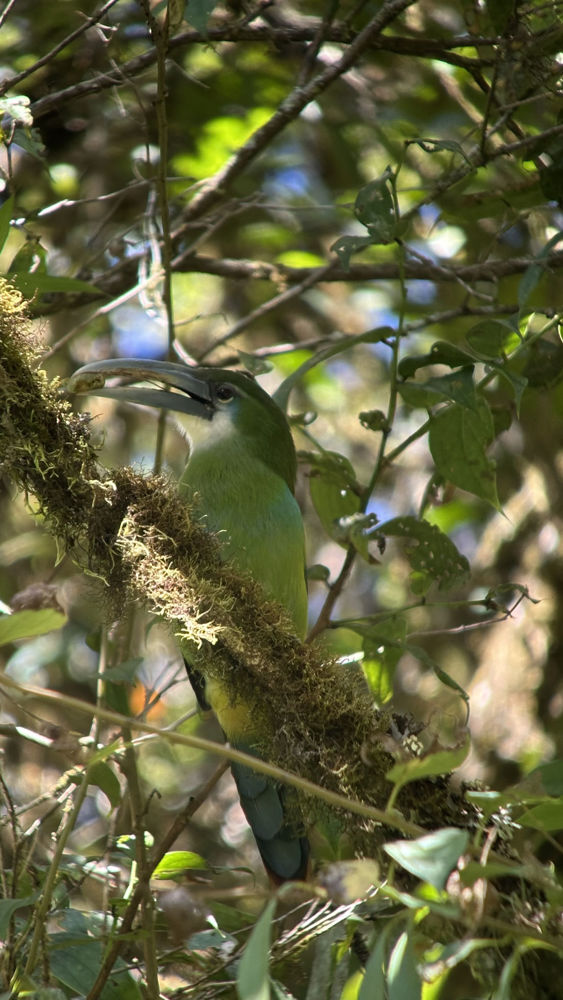
Blue-banded Toucanet © Doris Valencia
The tanager spectacle was dazzling; we admired Paradise, Golden-eared, Golden-naped, Blue-necked, Golden, and Orange-eared tanagers, among others. At the Cock-of-the-rock lek, up to nine males performed their spectacular dances, though no females appeared that morning. Mammals also joined our sightings: Common Woolly Monkey, Tufted Capuchin, a quick Tayra, and even an Agouti. One unforgettable morning brought us close to two apex predators: a perched immature Black-and-chestnut Eagle and an adult Solitary Eagle, both before breakfast!

Immature Black-and-chestnut Eagle © Doris Valencia
After our time in the cloud forest, we continued downhill to the Andean foothills (1,500 ft.), where the forest and birdlife changed completely. We stayed three nights in cozy cabins overlooking a beautiful lagoon. Heavy rains cooled the air but didn’t stop the birding. Around the lagoon, we enjoyed close views of Hoatzin, Capped Heron, Brazilian Teal, Purple Gallinule, and Limpkin. Exploring the forest trails, we encountered several antbird species and were thrilled to locate the lek of Band-tailed Manakins after a patient search, a rewarding moment for all. We also visited a local garden run by Yonatan and his wife, where we saw Goeldi’s and White-browed antbirds, Great Antshrike, and had quick but exciting views of Amazonian Antpitta and Rufous-sided Crake.
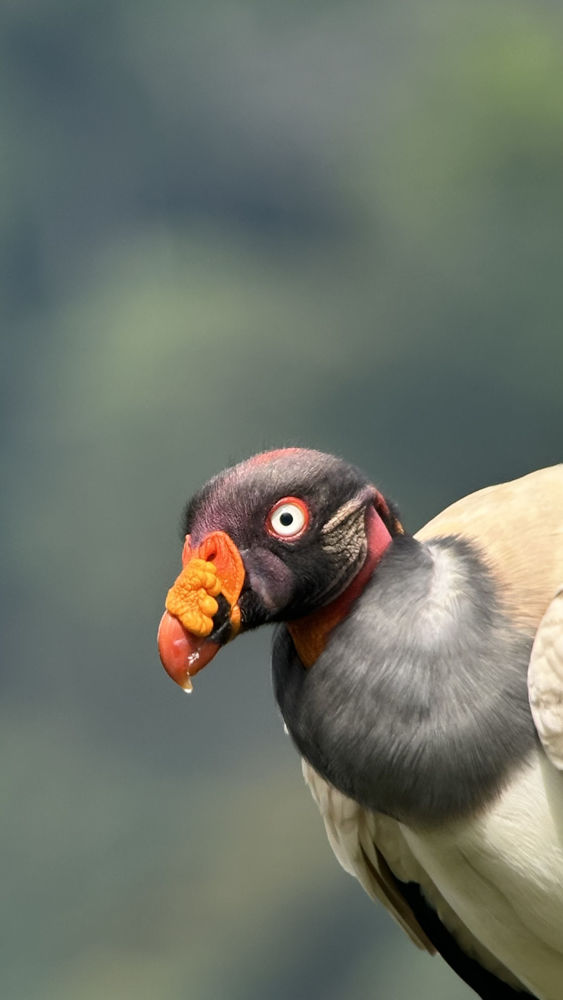
King Vulture © Doris Valencia
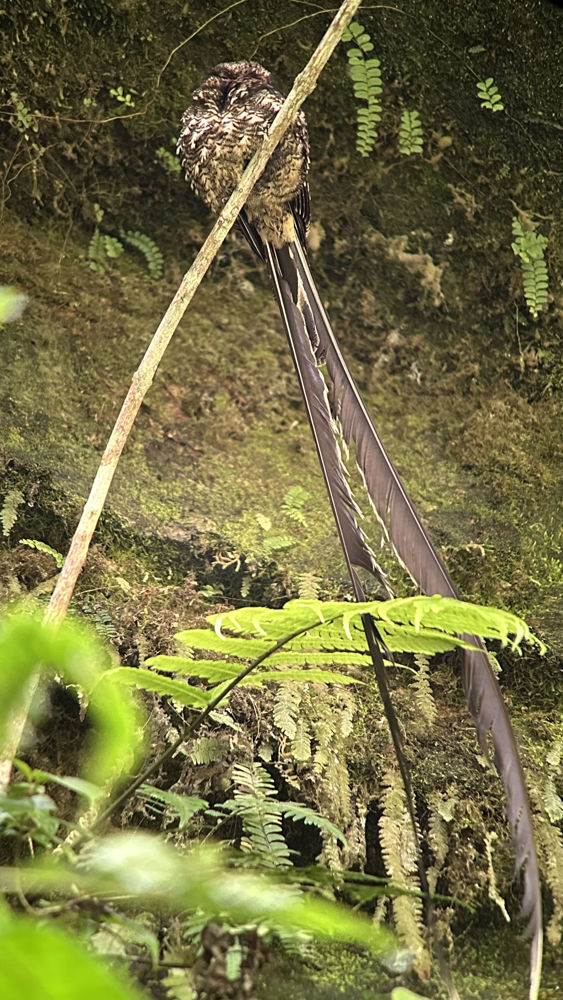
Lyre-tailed Nightjar male © Doris Valencia
The highlight, however, was a stunning King Vulture working on a piece of carrion along with Black and Turkey vultures. Their hummingbird garden was magical, a cloud of color and motion with White-necked Jacobin, Gray-breasted Sabrewing, Long-billed Starthroat, Golden-tailed Sapphire and more. A night walk revealed Tropical Screech-Owl and Black-banded Owl. On our final morning, a short walk around the lagoon rewarded us with Pygmy Kingfisher, Silvered Antbird, and a handsome Sungrebe. This lodge was also a center for scientific research, and one evening we attended an engaging talk by Alejandro, a PhD researcher studying beetles and their ecological importance—a wonderful reminder of how conservation and ecotourism work hand in hand.
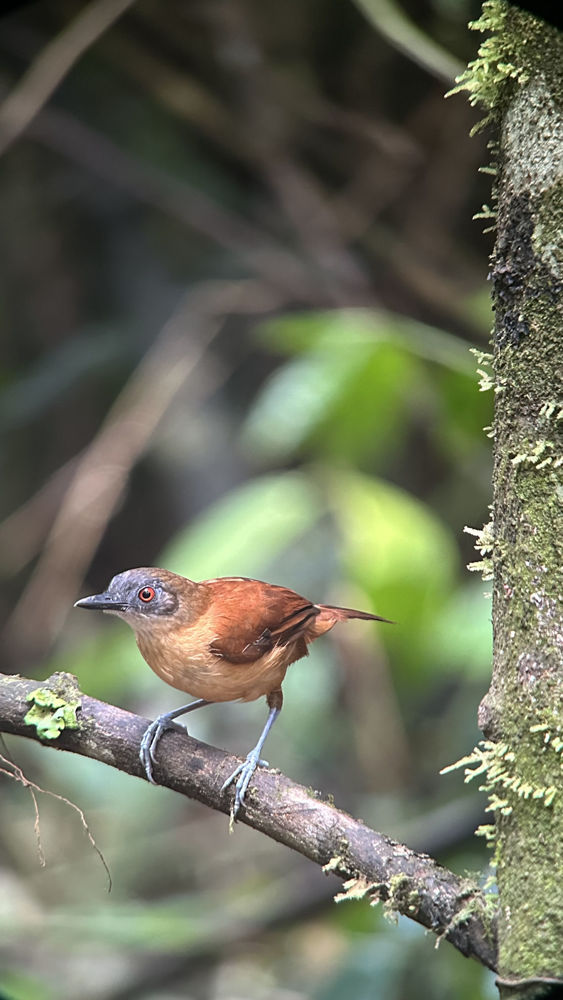
Goeldi's Antbird © Doris Valencia
Next, we climbed back up the Manu Road to our final lodge in the upper montane forest (10,000 ft.). The drive was full of surprises, none greater than a stunning male Lyre-tailed Nightjar perched in full daylight, followed shortly by a rare Andean Potoo! We also spotted a Chestnut-crested Cotinga, Barred Fruiteater, and Grass-green Tanager among a feeding flock. One special morning was dedicated to meeting the “Antpitta Whisperer,” a dedicated staff member who has patiently habituated several elusive species. Thanks to his efforts, we had extraordinary close views of Urubamba Antpitta (endemic), Red-and-white Antpitta (endemic), and the adorable Leymebamba Antpitta. At the lodge birdbath, we enjoyed Hooded and Scarlet-bellied mountain-tanagers bathing just a few feet away. Our evenings were spent by the fire, enjoying delicious dinners and reviewing our bird list, the perfect end to each rewarding day. On our last morning, we drove back toward Cusco, stopping at a sacred garden that offered spectacular final sightings, including the Bearded Mountaineer and Chestnut-breasted Mountain-Finch, plus Black-tailed Trainbearer, Giant Hummingbird, Blue-and-yellow Tanager, and Black-backed Grosbeak.

Leymebamba Antpitta © Doris Valencia
Back at the Cusco airport and before we said goodbye, we realized that despite the rain, the birds were generous and the sightings outstanding, including several species rarely encountered. It was, without a doubt, an unforgettable journey through my favorite place on Earth, shared with travelers who truly appreciate the wonders of nature.
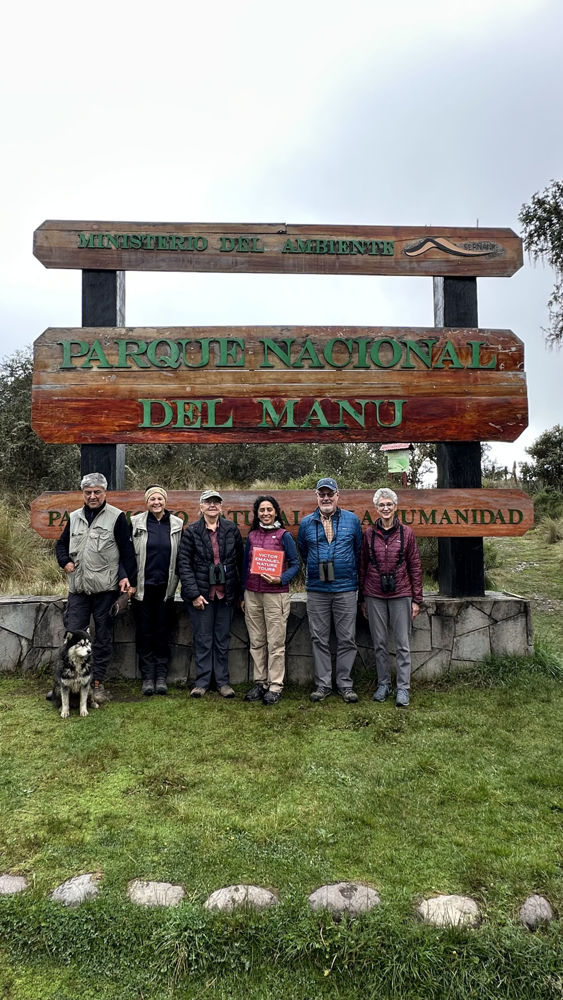
Entrance to Manu National Park © Doris Valencia
A complete list of the birds recorded on this tour can be found at https://ebird.org/tripreport/418704
Description for the next departure of this tour.

